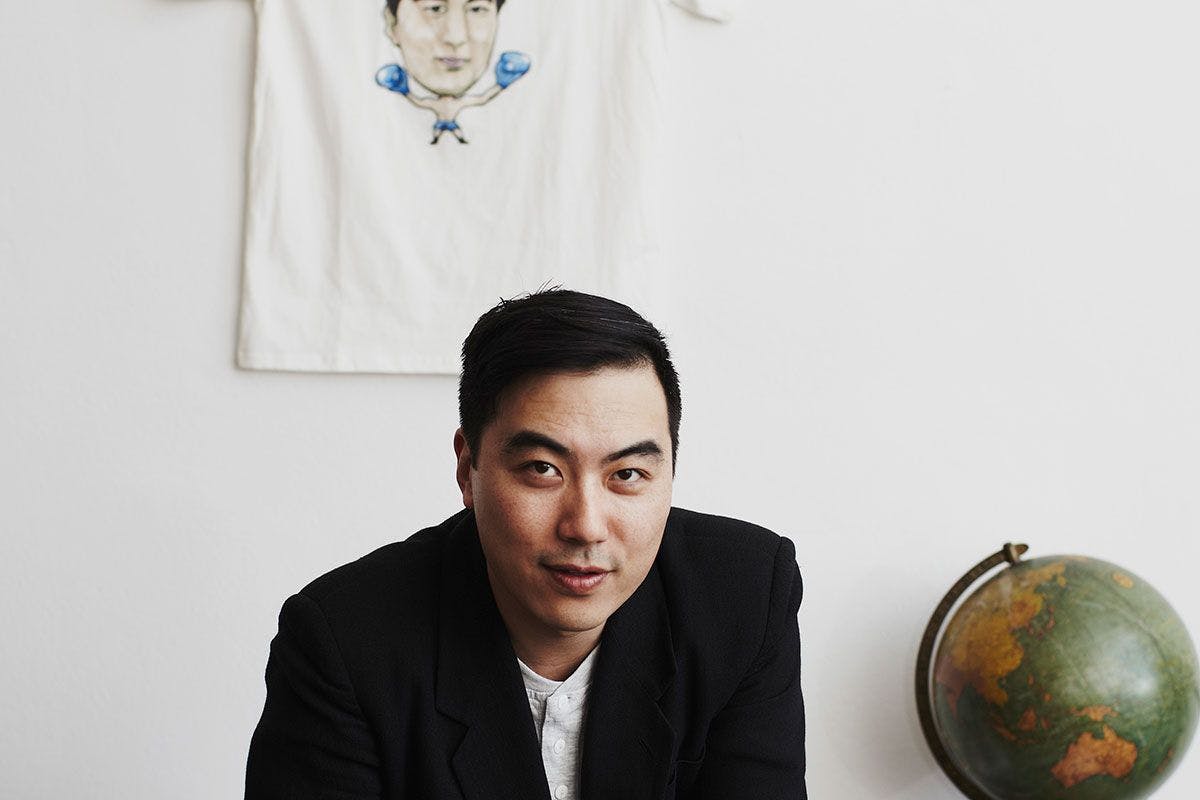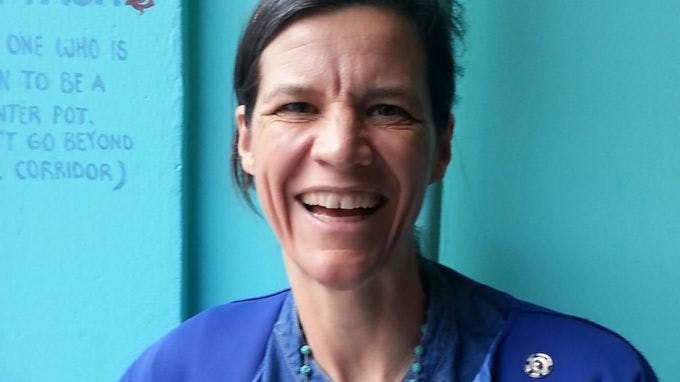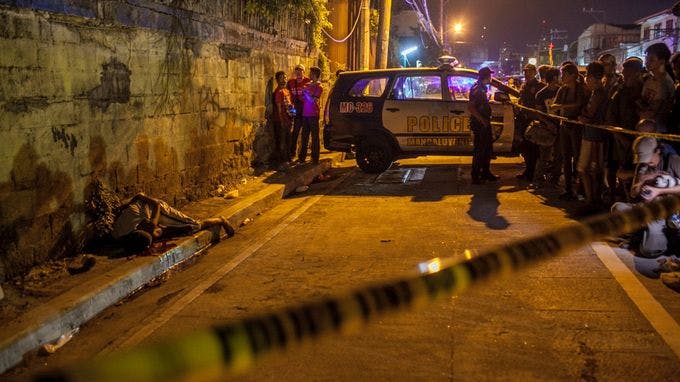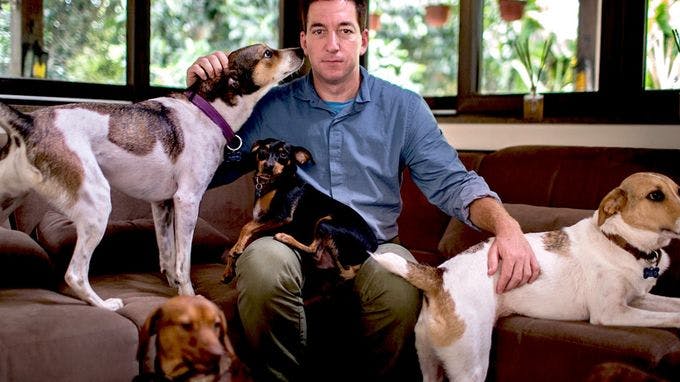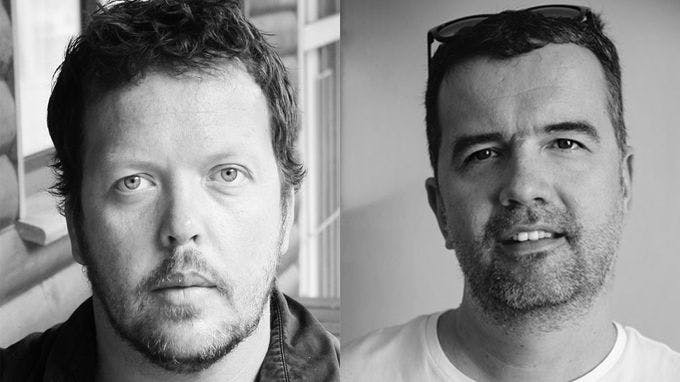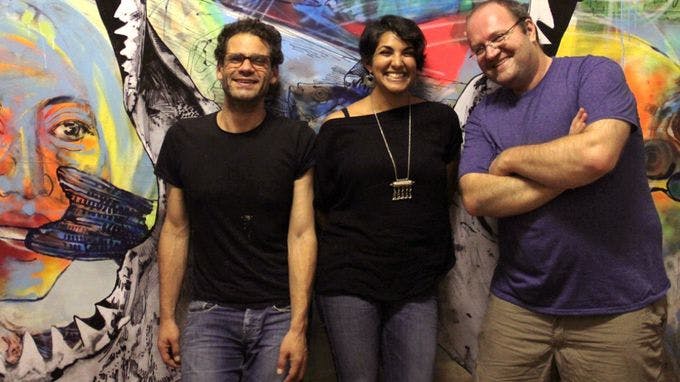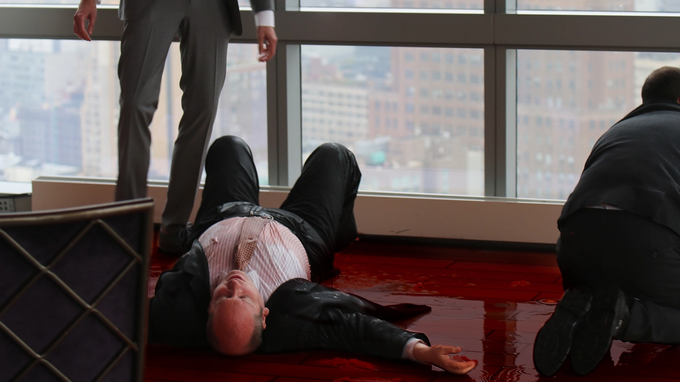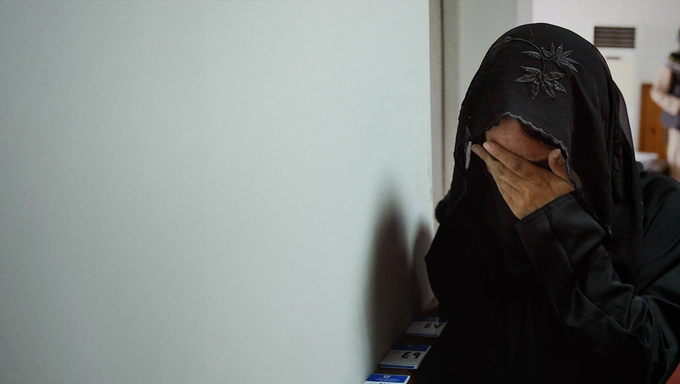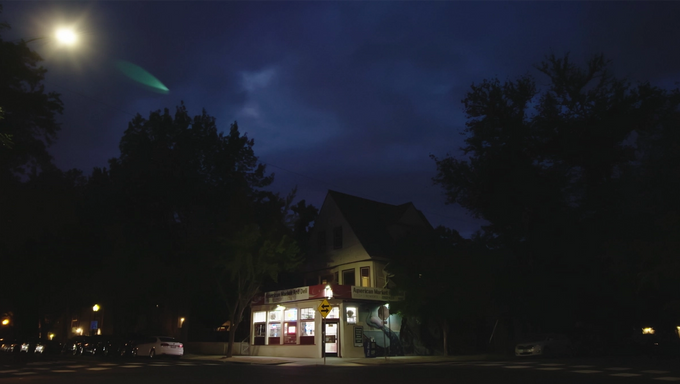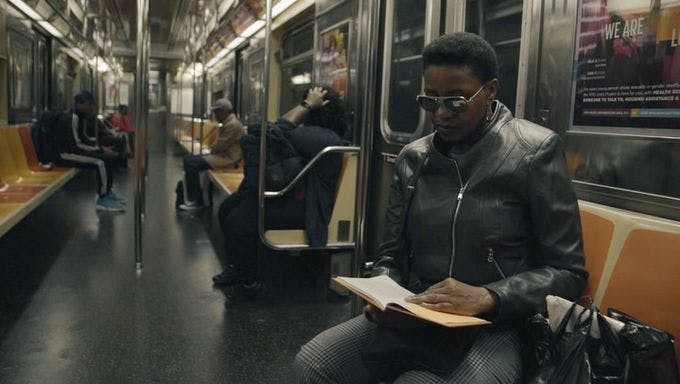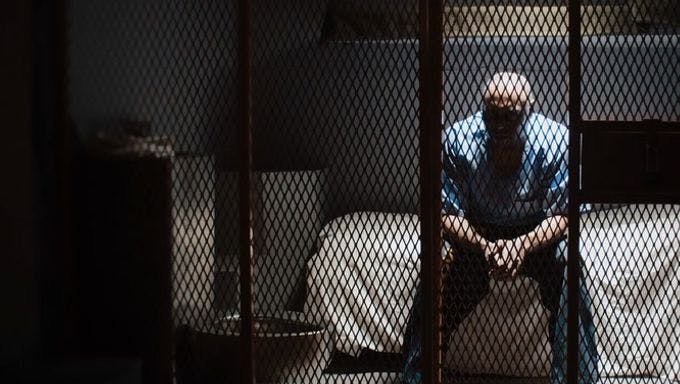Some filmmakers find a formula and stick to it. They settle on a core theme or subject area and explore variations within it. After nearly a decade on the job, it’s safe to say that Yung Chang is not one of those filmmakers. The 39-year-old Canadian director has worked in observational (Up the Yangtze, China Heavyweight) and socio-essayistic (The Fruit Hunters) modes, employed both sweeping cinematography and playful animation, made character profiles and peripatetic ruminations, and traveled from China to the U.S. and beyond. His latest, Gatekeeper, is a predictably unpredicted film set in the seaside town of Tojinbo, Japan, a scenic locale that doubles as one of the county’s most popular suicide destinations. Chang focuses on Yukio Shige, a retired police detective who runs a comfort food restaurant and scans the cliffs for people to talk back from the edge—something at which he’s proven remarkably adept.
In the following far-ranging Field Notes interview, Chang talks about experimenting with a length (39 minutes) and platform (online) that are new to him, the uniquely and necessarily collaborative relationship he had with his primary subject, and the moral and ethical challenges posed by a project that involves watching people at their most vulnerable.
How long had you been working on this project before Field of Vision came onboard?
Yung Chang: I had been researching for a year or so on the subject matter [before Field of Vision became involved]. I came across an article in Time Magazine a few years ago, and the initial research trip was self-funded. I went with my co-producer, Eriko Miyagawa, to see if there was a story there. I met with Shige and was immediately taken into his world via his charisma, his passion. He was driven by what I interpreted as a burden of guilt he was trying to alleviate. There was a research stage that confirmed there could be a film, then there was a dream version of the film that was similar to the final product—twenty-four hours in the day of this character that hopefully included an encounter, a suicide save.
What was it about this place and phenomenon that lured you in?
Chang: There was a personal element that was important, in terms of processing the idea of suicide and suicide prevention. Both Eriko and I have personal experience with family or friends that have committed suicide. So there was a certain yearning to try to unravel the mystery of loss and death. I was trying to find a poetic way to say it. Killing yourself can leave the connected survivors at quite a loss to figure out why [it happened]. And working with Shige-san there was some resolve, though I’m still trying to suss that out. It was a kind of cathartic process for us making the film.
There’s a fascinating dual theatre the film. There’s this nostalgic space Shige’s created, serving comfort food in a beautiful location, yet it adjoins a place of many deaths. I would imagine that was a confusing space to enter when you have these strong emotions yourself.
Chang: It’s one of the epicenters of suicide in the country of Japan, and has become a tourist attraction. People go there to contemplate suicide, though not [necessarily] to commit it. If you go to Tojinbo, you’re not sure if you’re ready yet. For Shige it’s where people sit on the threshold, and that’s where his opportunity as a gatekeeper is—to step in to show the virtues of surviving. There’s a morbid fascination with it, but Shige has the most optimistic reinterpretation of that place. He’s like a shining beacon. He’s the little lighthouse. His nature filters across. And it was soothing for us to be around someone who looks at death in a different way. For someone who deals with depression, whatever it may be, it’s refreshing because he can speak so frankly about it.
You want to think someone like that is out there watching out for the people who don’t feel seen, and then you find out Shige actually exists.
Chang: It’s gotten to the point where he’s so popular that suicidal people will go seek him out. They’re not even necessarily going to the cliffs. He used to have a phone number listed for the cafe, but at some point he got rid of the hotline to be able to focus on people who show up. That was the threshold of what he could handle. It does mean something to go there physically, to contemplate life and watch the sunset on a cliff. It’s a transitional place for people. As Shige says, it’s a place full of life. You look around and trees are growing in the cracks in the stone. It’s the beginning of life, not the end. One question I had, when I was thinking about making the film, was what would drive one person to commit his golden years to pursue a life that was bound to this area? For him it had to be that notion that there was poetry. It’s beautiful there—that’s sustaining for him. Shige does have his demons. He deals with his PTSD [from his previous career as a police detective] through other means. He drinks a lot and he does smoke a lot. I think that kind of work demands it.
In terms of dramatic structure, you pull off something that could only really be done in a documentary. You can start with reflection and conversation, interviews and back-story, and then move into real time, without even calling attention to it. The tense of the film shifts.
Chang: What was driving my thoughts on the narrative was the limitation of the time format. I relished the opportunity to make a film that allowed the climax to hold in a much more compressed format. You have forty minutes to build it. In a way, you increase the tension given the limitation. It’s a beautiful form to work within. I was thinking about short stories, like [those by] Alice Munro. How a story can end ambiguously on an up note, at the climax, which pushes right to the limit of the film. It was exciting to have the potential to do that in a documentary. In a feature, it would be different. My editor wanted to push for the 90-minute version, but I felt that it wouldn’t sustain the emotional depth.
I have great respect for your saying, “no, this is the shape.” It’s easier to release a feature, to go down that well-trod path, but you recognized the ideal form and shape for this subject.
Chang: I think there a lot of films that try to fill out to feature length for practical purposes and it doesn’t always make for a better film. It felt good to know from the beginning what the intentions were. The subject has to fit the film. If the film is 90 minutes, it’s 90 minutes. If it’s five minutes, it’s five minutes. There’s something exciting about the time limitation—the economy, the precision of telling the story.
Yet it’s also quite cinematic. It’s a film premiering online that also works on a bigger screen.
Chang: I felt privileged to have the opportunity to make the film that I wanted to make, to allow the brain to think cinematically and not feel like I had to reduce it to the size of an iPhone screen. With FOV there wasn’t an impetus to deliver something that hits the statistical marks of a short film [destined] for a G-rated website.
I’d like to get back to this dramatic shift into the present that happens in the film. You mentioned that one of your wishes for the piece was for it to function as a day in the life and see someone get saved. When you first take us to the cliffs, you’re introducing a person who lives and performs a remarkable service in this hauntingly beautiful place, giving us a sense of what happens there. You’re surveying things but it’s like a demonstration, not really active—the narrative is what generally happens or has happened. Yet suddenly Shige thinks he spots somebody, and we move into the present moment. We’re no longer thinking about the idea of stopping people from committing suicide, we’re thinking, “Is something about to happen right now?” How do you begin to manage the viewer’s expectations and fears in that moment?
Chang: I wanted to plant the seeds of his world, his motivations. We would be immersed in his point of view, leading the audience to the moment when we fall into real time, which would then involve an attempt to save somebody. It couldn’t be anything but that—a save. I was thinking about the element of suspense and drama, and in a weird way I was thinking a lot about The Conversation, about surveillance. I had a rigorous conversation with my crew about how to film this properly. There was a question of what if Shige doesn’t save someone, and we decided we wouldn’t film that moment. Statistically we were lucky. Shige has a very detailed set of evidence of popular times of the year, and time of day [for when people commit suicide]. They’ve never lost anyone they’ve encountered on the cliffside, which is 500 and counting. Though Shige will check the newspapers, scan the police reports to see if anyone turned up on the shore the next day, and that does happen sometimes. But more often than not it doesn’t. The numbers are going down.
How many “saves” did you witness?
Chang: We filmed five instances in four weeks. We were given permission to include two of those. Ultimately we decided on one, the one that is the climax of the film.
How did you broker that—getting permission, and deciding on the one to use in the film?
Chang: There was no way to film this where Shige was not the leader, in a certain sense. It was an awkward position to be in. We’re shooting behind a wall, trying to be secretive. And he would be the guy who would ask them to sign the release form and give us permission. There was a lot [of talking] over sake and sushi at the end of the day—we were definitely working through the ethical and moral questions, trying to be rigorous in examining our motivations. We had a privileged and rare access into what a suicidal person is thinking at the moment. And Shige was our vessel.
I appreciated the respectful distance the camera takes in those scenes between Shige and the people he’s invited back from the cliff. You’re shooing from what seems like at least one room away. Distant enough to allow the conversation to have its own unencumbered space.
Chang: Respectful was what we wanted to be, and they’re mostly long takes. In the climax, with the boy he brings into the cafe, there’s a very subtle kind of creep-in [by the camera]. Almost imperceptible. Letting the conversation play out was important.
It’s amazing to watch Shige in those encounters. He’s very at ease and casual, and people really open up to him.
Chang: He tries to play it off, the tension. He laughs. He tries to be chummy. And in a Japanese way it works to break that barrier. That’s his method, and he’s so effective. I’m not sure how others would react. I know I wouldn’t handle it well. I would be a mess. I would cause more harm than good.
You’ve now made one of those films that is, in a sense, about watching. A film that links a character’s act of watching with that of the audience watching the movie. That directly causes you reflect on the process of making a movie and its potential effect on the audience. Where does this film lead you from here?
Chang: After I made China Heavyweight, I kind resolved that I would stop making observational films, simply because the process of making a film like that requires a kind of empathy that is painful. You draw a line [past which] you can’t interfere, yet behind the camera there’s an involvement required to build a relationship with the subject. You’re balancing the intensity of the relationship with the subject with the drama of the film. There’s that kind of constant battle. The painful glee that one experiences as a filmmaker at schadenfreude moments. I do think for Gatekeeper, with this idea of surveillance, of observing—you’re making the ultimate film about it in a way. There’s this morbid fascination with observing suicide.
And there’s a layer of asking us to observe too.
Chang: Totally. That’s the kind of one eye open, one eye closed participation that is begged of the viewer. I think there’s that complicity when you’re making a film about surveillance.
Is there something that seems permanent about that? Once you bring it in, it seems like it would be hard to stop thinking about the camera in that way.
Chang: My comfort level with the camera is that it helps distance you emotionally. Because you get to look through a screen or viewfinder as a bridge to reality. It’s always easier when it’s behind something or behind a lens. Shige, for example, is always using binoculars. It was interesting for the crew and me—we were filming with the long lens on the cliff trying to parse out who was suicidal and who wasn’t. And we’d always get it wrong. We hadn’t trained ourselves like Shige had. Everyone looked like a jumper to us.
I felt that as a viewer—what am I actually looking for? You invite the viewer into your very process of being wrong.
Chang: Our point of view was not what Shige was looking for. You’ve triggered some thought for me here—there’s something to this notion of observation and how it carries forward. As a documentary filmmaker, there’s always the complication of what filming reality is like for the filmmaker and the subject. The moral and ethical framework you have to give yourself, if it isn’t hardened or defined, can be very troubling. This is a film that is on the edge of that.
Were you concerned at all by what you might observe?
Chang: I am a sort of optimistic filmmaker. I didn’t let my mind go to the fact that we might film someone dying. I just didn’t believe that it would happen.
I don’t even know that I believe in the notion, but I wonder if the energy of all these people with an eye out, hoping for the opposite, could have made a difference in those moments.
Chang: It’s possible. And maybe Shige knowing he was being filmed translated that energy even mor
